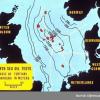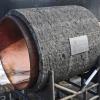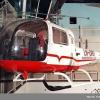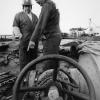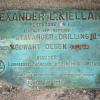National resources and international enterprise: discovering Ekofisk
The Ekofisk story
In 1963, Phillips Petroleum, in partnership with the Belgian firm Petrofina, carried out extensive seismic surveys in the North Sea.
These tests seemed to indicate that the most likely area to find oil was on the line between British and Norwegian claims to the sea floor. Phillips formed a Norwegian company in partnership with Petrofina, the Italian firm Agip, and Norwegian firms to explore and exploit this new resource.
Esso sent its drilling rig, the "Ocean Traveler," from the Gulf of Mexico to explore further in 1966. It was joined in 1967 by the "Ocean Viking" drilling rig ordered by the new Phillips consortium and built by the Norwegian firm ODECO in 1967.
In late 1969, after a number of test borings that hinted at potential but did not show commercial promise, the "Ocean Viking" discovered oil and gas deposits large enough to be exploited commercially in block 2/4, close to the edge of the Norwegian claim.
Phillips had a naming system for its blocks that proceeded alphabetically and always used fish names. As the new discovery was in was in the "E" section, the new realm became known as 'Ekofisk,' which means (though it is spelled incorrectly in Norwegian) 'Echofish.'
 Previous Story
Next Story
Previous Story
Next Story
How to cite this page
Alexander Badenoch, 'National resources and international enterprise: discovering Ekofisk', Inventing Europe, http://www.inventingeurope.eu/story/national-resources-and-international-enterprise-discovering-ekofisk
Sources
- Kvendseth, Stig S. Giant Discovery: A History of Ekofisk Through the First 20 Years. Phillips Petroleum Company Norway, 1988.





